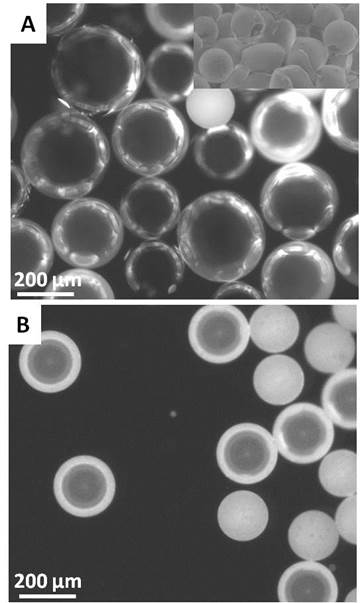We
utilized microfluidic
methods to investigate
the role of geometric structures, e.g. thin spherical block copolymer shells,
in the microphase
separation
in block copolymer thin films. The shells are comprised of the triblock
copolymer styrene-isoprene-styrene
(SIS).
For
air-in-oil-in-water emulsions, microfluidic devices with two consecutive
flow-focusing junctions were used to generate air bubble-containing droplets of
a solution of the SIS triblock
copolymer in toluene in an aqueous solution of poly(vinyl alcohol) (PVA).
The
toluene was allowed to evaporate, leaving thin spherical shells of SIS triblock
copolymer suspended in PVA solution (Fig. 1). The use
of microfluidic methods to generate such particles facilitates the
straightforward modification of the inner phase composition to study the effect
of different chemistries of the core on block copolymer microphase
separation, as well as the effect on the mechanical stability of the shell.

Figure
1
(A)
Fluorescence image of an air-in-oil-in-water emulsion.
The inner phase
is air, the middle phase is composed of styrene-isoprene-styrene triblock
copolymer, and
the outer phase is water. (B)
Fluorescence image of a water-in-oil-in-water double emulsion.